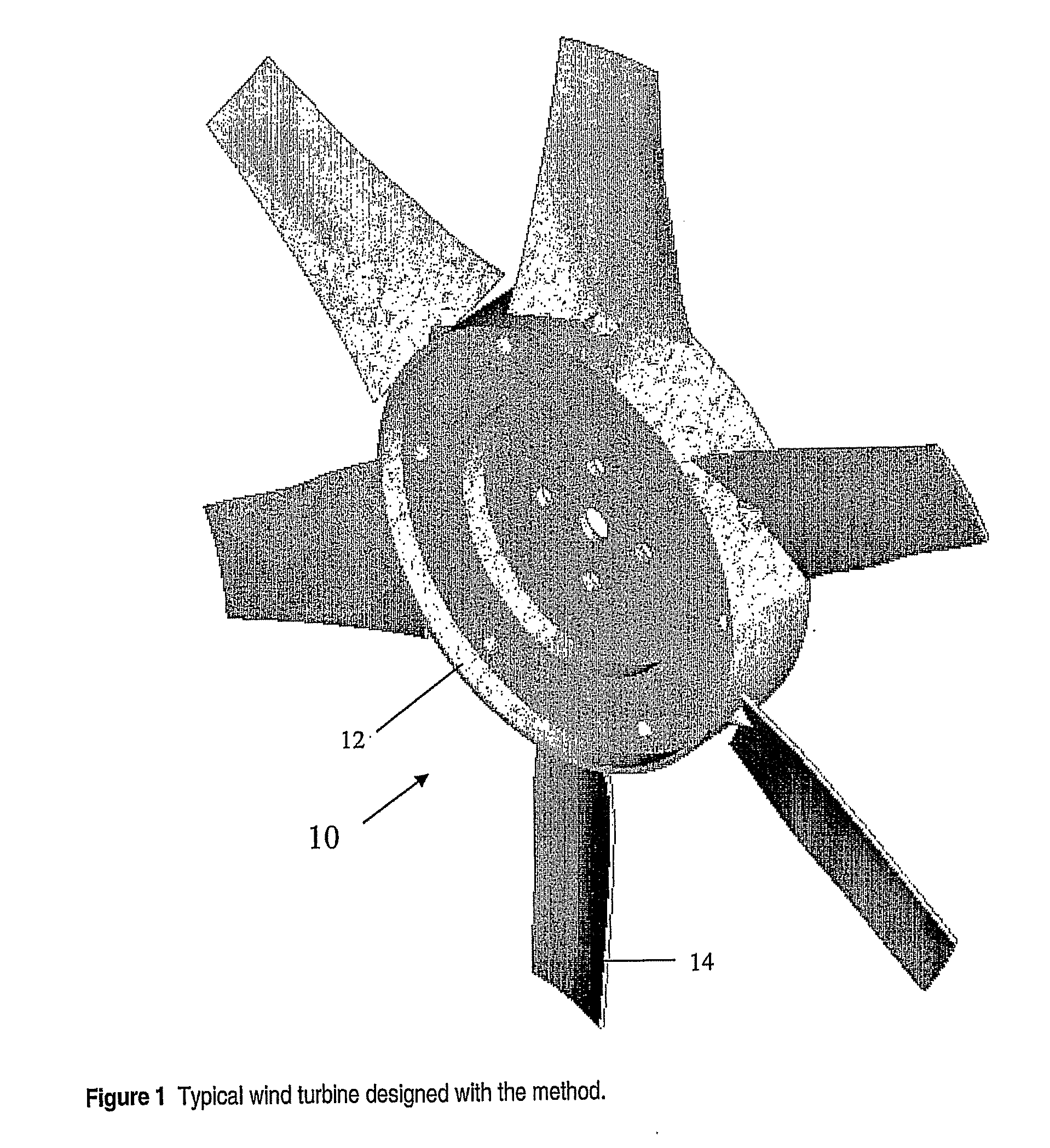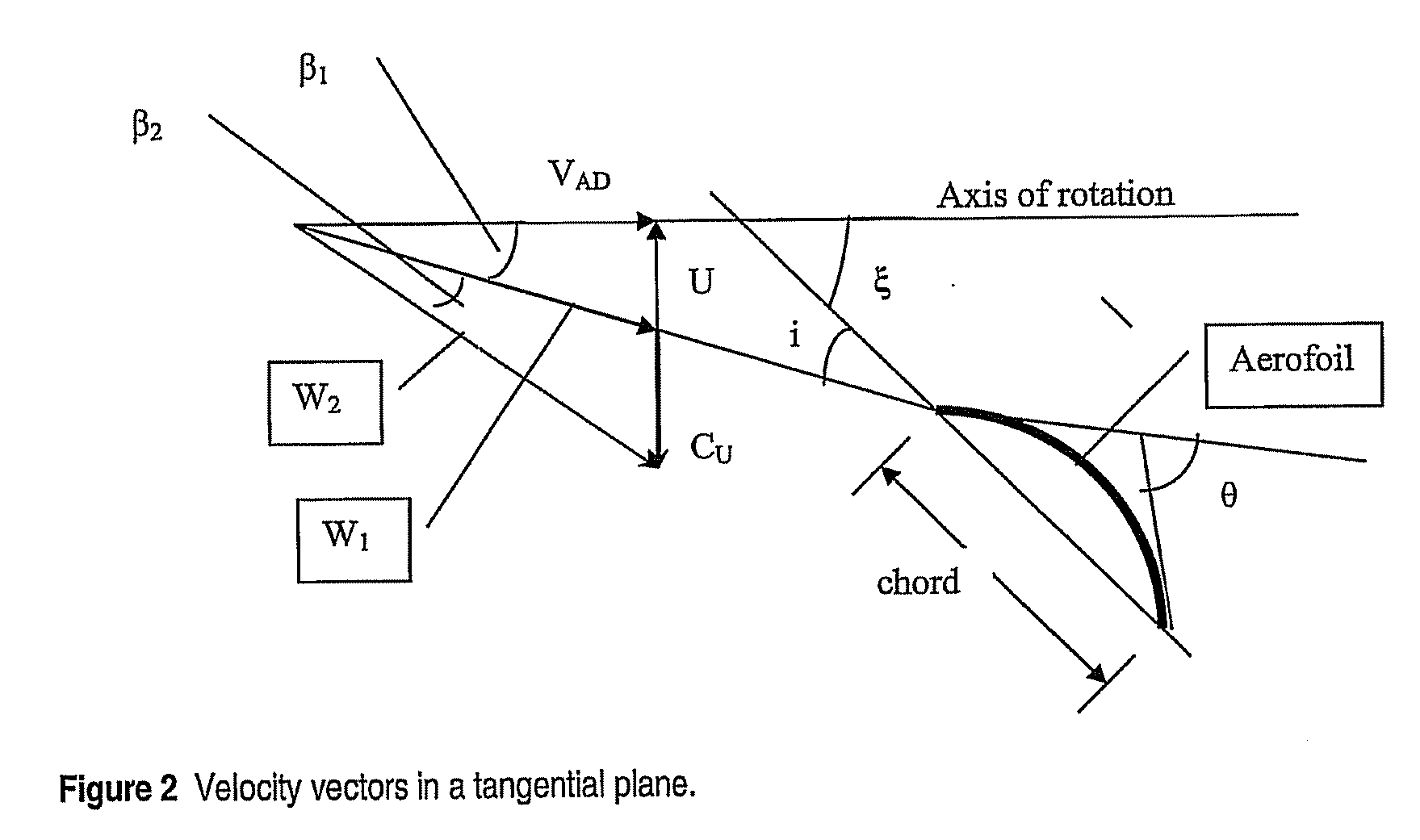Wind Turbine
a technology of wind turbines and blades, which is applied in the field of wind turbines, can solve the problems of complex speed limit mechanisms, large blade characteristics, and inability to meet the requirements of wind turbines developed in recent decades for agricultural purposes, and achieve the effect of maximising energy extraction and optimizing blade characteristics
- Summary
- Abstract
- Description
- Claims
- Application Information
AI Technical Summary
Benefits of technology
Problems solved by technology
Method used
Image
Examples
Embodiment Construction
[0074]Referring to the drawings, FIG. 1 shows a rotor10 for a horizontal axis wind turbine which has been designed in accordance with a preferred embodiment of the present invention. The rotor 10 includes a hub 12 and a plurality of blades 14 extending radially from the hub 12. The blades 14 are shaped such that in operation, at any selected radial position along the length of the blades, the ratio of air whirl velocity CU leaving the blades in the direction of blade rotation divided by axial wind speed upstream of the rotor VA is given by:
CUVA=49λ
[0075]wherein λ is the local speed ratio at the selected radial position and is given by
λ=UVA
[0076]wherein U is the circumferential blade speed at the selected radial position.
[0077]The following is a detailed description of a process for defining the shape of the blades to meet this requirement. This preferred form of the process, which is given by way of illustration only, is specifically directed to the design of small, slow speed, effi...
PUM
 Login to View More
Login to View More Abstract
Description
Claims
Application Information
 Login to View More
Login to View More - R&D
- Intellectual Property
- Life Sciences
- Materials
- Tech Scout
- Unparalleled Data Quality
- Higher Quality Content
- 60% Fewer Hallucinations
Browse by: Latest US Patents, China's latest patents, Technical Efficacy Thesaurus, Application Domain, Technology Topic, Popular Technical Reports.
© 2025 PatSnap. All rights reserved.Legal|Privacy policy|Modern Slavery Act Transparency Statement|Sitemap|About US| Contact US: help@patsnap.com



